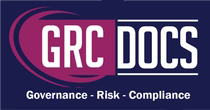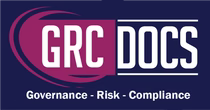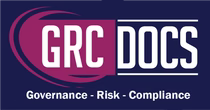SOC 2 Certification Assistance How Experts Help You Get Certified Faster
Introduction
In today's digital age, ensuring the security and privacy of client data is more important than ever. With cyber threats growing in both frequency and sophistication, businesses of all sizes need to prove they are trustworthy stewards of their customers' data. This is not just a matter of regulatory compliance, but a fundamental component of maintaining customer confidence and loyalty. One way to demonstrate this commitment is through SOC 2 certification. But what exactly does SOC 2 certification entail, and how can businesses achieve compliance effectively? This guide will walk you through the basics of SOC 2 reports, the importance of SOC 2 certification, and steps to achieving SOC 2 compliance.

What Is A SOC 2 Report?
A SOC 2 report provides detailed information and assurance about a service organization's controls relevant to security, availability, processing integrity, confidentiality, and privacy. Unlike some other security standards, SOC 2 reports are unique to each organization because they are designed to reflect the specific controls implemented by the company, based on its business practices. This tailored approach allows organizations to focus on the criteria most relevant to their operations, providing a more accurate and meaningful assessment of their data protection capabilities. Additionally, SOC 2 reports are valuable tools for organizations seeking to improve their internal processes and align them with global standards.
The Importance Of SOC 2 Certification
SOC 2 certification is vital for technology and cloud computing companies that store customer data. Achieving SOC 2 compliance not only helps protect against data breaches but also enhances your company's reputation, giving potential clients confidence in your security measures. In a market where customers are increasingly concerned about data privacy, being SOC 2 certified can differentiate your company as a leader in data security. Furthermore, it may be a requirement for doing business with certain clients who prioritize stringent data protection measures, thereby opening up new business opportunities and markets.
Steps To Achieve SOC 2 Compliance
Achieving SOC 2 compliance involves a series of strategic steps, beginning with understanding the requirements and ending with maintaining ongoing compliance. It requires a comprehensive approach that integrates organizational policies, technical controls, and personnel training. Each step in the process is crucial for ensuring that your organization not only meets the necessary criteria but also sustains those standards over time.
Step 1: Understand the Trust Service Criteria: SOC 2 compliance is based on five "Trust Service Criteria": security, availability, processing integrity, confidentiality, and privacy. Each criterion focuses on different aspects of data protection and organizational policies.
-
Security: The protection of system resources against unauthorized access. This involves implementing robust access controls, encryption, and other security measures to defend against cyber threats.
-
Availability: The accessibility of the system, products, or services as stipulated by a contract or service level agreement. Ensuring availability means having reliable systems and processes to prevent downtime and disruptions.
-
Processing Integrity: Ensures that the system achieves its purpose and delivers the right data at the right time. This involves validating data processing methods to ensure accuracy and timeliness.
-
Confidentiality: Protects sensitive information from unauthorized access. Confidentiality measures include data masking and encryption to safeguard sensitive information.
-
Privacy: Addresses the system's collection, use, retention, disclosure, and disposal of personal information. Privacy practices must comply with legal and ethical standards to protect individual rights.
Step 2: Conduct a Readiness Assessment: Before diving into a full SOC 2 audit, conduct a readiness assessment to identify any gaps in your current processes that need to be addressed. This assessment helps you understand which areas of your operations may need improvement to meet SOC 2 standards. It acts as a preliminary check, providing a roadmap for necessary adjustments and enhancements. By thoroughly examining your current practices, you can prioritize actions, allocate resources more efficiently, and ensure that you are fully prepared for the formal audit process.
Step 3: Implement Necessary Controls: Based on the readiness assessment, implement the necessary controls to address any identified gaps. This may include updating policies, implementing new security measures, or training employees on security best practices. Tailoring these controls to align with your organizational goals and industry standards is essential. Implementing effective controls not only aids in achieving compliance but also strengthens your overall security posture, fostering a culture of continuous improvement and vigilance within your organization.
Step 4: Choose the Right Auditor: Selecting the right auditor is crucial for a successful SOC 2 audit. Choose an independent, third-party auditor with experience in SOC 2 standards and your industry. The auditor will examine your controls and processes to ensure they meet the necessary criteria. Engaging an auditor who understands your business context can provide valuable insights and recommendations that go beyond mere compliance. A well-chosen auditor becomes a partner in your journey toward robust data protection, offering guidance that enhances both operational efficiency and security.
Step 5: Conduct the SOC 2 Audit: The SOC 2 audit consists of two types: Type I and Type II.
-
Type I: Evaluates the design of controls at a specific point in time. It is an initial assessment that verifies that the necessary controls are in place.
-
Type II: Assesses the operational effectiveness of controls over a period of time, typically six months to a year. This audit type demonstrates not only the presence of controls but their consistent and effective application over time.
Your organization can choose which type of audit to conduct based on your specific needs and the preferences of your clients or stakeholders. Each audit type offers distinct insights and benefits, allowing you to tailor your compliance efforts to align with business objectives and client expectations.
Step 6: Review and Respond to Audit Findings: After the audit, review the auditor's findings and make any necessary changes to your controls. This might involve addressing deficiencies or making improvements to your processes to ensure full compliance with SOC 2 standards. Taking prompt and decisive action on audit findings is crucial for maintaining compliance and enhancing your security measures. Regularly updating your strategies and controls based on audit insights helps build a resilient security posture that can adapt to evolving threats.
Step 7: Maintain Ongoing Compliance: SOC 2 compliance is not a one-time effort. It requires ongoing maintenance and vigilance to ensure that your controls remain effective and up-to-date. Regularly review and update your security policies, conduct internal audits, and ensure continuous training for your staff. Establishing a culture of security awareness within your organization fosters proactive risk management and encourages employees to prioritize data protection in their daily activities. By embedding compliance into your organizational DNA, you ensure sustained security excellence.
Benefits Of SOC 2 Certification
Achieving SOC 2 certification offers numerous benefits for your organization beyond enhanced security. It serves as a testament to your commitment to data protection, providing both tangible and intangible advantages that extend across various facets of your business operations.
-
Building Trust with Clients: By becoming SOC 2 certified, you demonstrate to your clients that you take data security seriously. This builds trust and can be a deciding factor for potential clients choosing between your services and those of a competitor. Trust is a critical component of business relationships, and SOC 2 certification assures clients that their data is in safe hands. As a result, it can enhance customer loyalty and lead to long-term partnerships built on confidence and mutual respect.
-
Competitive Advantage: In a crowded marketplace, SOC 2 certification can set you apart from competitors. It shows that you are committed to maintaining the highest standards of data security and privacy, which can be a significant advantage when competing for business. This certification acts as a differentiator, signaling your dedication to safeguarding client information. By prioritizing data protection, you position your organization as a leader in your industry, attracting clients who value security and compliance.
- Reduced Risk of Data Breaches: Implementing the controls necessary for SOC 2 compliance reduces the risk of data breaches and other security incidents, protecting your organization and your clients from the potentially devastating consequences of a data loss. Robust controls minimize vulnerabilities and enhance your ability to detect and respond to threats swiftly. By proactively managing risks, you safeguard your organization's reputation and avoid the costly financial and legal repercussions associated with data breaches.
Conclusion
SOC 2 certification is a critical step for any organization that handles customer data. By understanding the requirements and following a structured path to compliance, you can achieve SOC 2 certification and enjoy the numerous benefits it offers. Not only does it improve your organization's security posture, but it also builds trust with clients and provides a competitive edge in the marketplace. Start your journey to SOC 2 compliance today and safeguard your business for the future. Embrace this certification as a strategic investment in your organization's longevity and success, ensuring that you remain a reliable and secure partner in the digital landscape.






